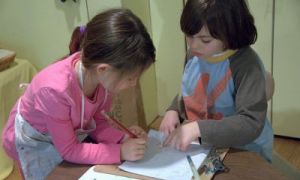An educational leader in early childhood plays a pivotal role in shaping not just curriculum, but the entire culture of a service. The following article provides information on standout qualities that define effective leadership in this space and applying these qualities to a service.
Visionary Thinking
- Sets a clear direction for the service, aligning with frameworks like the EYLF.
- Anticipates future trends (e.g. digital integration, inclusive practices) and adapts proactively.
- Inspires innovation in pedagogy and documentation.
Strong Communication
- Builds trust through open, respectful dialogue with educators, families, and children.
- Facilitates reflective conversations and collaborative planning.
- Advocates for children’s rights and educator well-being.
Reflective Practice
- Models and encourages ongoing critical reflection to improve teaching and learning.
- Uses data and observations to guide decisions and support continuous improvement.
- Embeds a culture of inquiry and shared learning.
Emotional Intelligence
- Demonstrates empathy, patience, and emotional regulation in complex situations.
- Supports team morale and resolves conflicts constructively.
- Builds strong, respectful relationships with diverse families and staff.
Adaptability & Resilience
- Navigates change (e.g. regulatory updates, staffing shifts) with calm and clarity.
- Maintains focus on quality outcomes even in challenging circumstances.
- Encourages flexibility and creative problem-solving among the team.
Pedagogical Leadership
- Leads curriculum development and ensures alignment with learning outcomes.
- Mentors educators in planning, documentation, and intentional teaching.
- Champions inclusive, culturally responsive practices.
Ethical & Compliance-Oriented
- Upholds the National Quality Standard (NQS) and relevant legislation.
- Guides ethical decision-making and ensures privacy, safety, and equity.
- Balances compliance with meaningful, child-centered approaches.
Applying These Qualities Into Your Service Setting
Apply Visionary Thinking
- Initiate reflective team meetings around future-focused topics (e.g. how STEAM provocations can evolve or how documentation practices might adapt to regulatory tech like CCTV).
- Share a “vision board” in the staff room that reflects key pedagogical goals for the year—tie it to the EYLF and NQS outcomes to keep it grounded.
Cultivate Strong Communication
- Establish “Voice of the Educator” circles—short, regular check-ins where staff share wins, dilemmas, or creative ideas. This builds psychological safety.
- Use Appsessment to co-reflect with educators on documentation—not just what was captured, but why it matters.
Model Reflective Practice
- Kick off each month with a team provocation (e.g. “What does cultural inclusivity look like in our room this month?”).
- Encourage educators to use a quick journal prompt at the end of each week: “One moment that sparked learning and what I learned from it.”
Lead with Emotional Intelligence
- Be present during transitions and tough moments—a calm, observing leader can make staff feel truly supported.
- Celebrate small wins often (a lovely family conversation, an improved summative assessment, a creative learning story).
Champion Adaptability
- When rolling out policy changes (like around privacy and imagery), frame it as evolving with purpose, and lead workshops where educators help shape how it’s implemented.
- Use hiccups—like tech hiccups in documentation—as shared learning moments, not frustrations.
Step into Pedagogical Leadership
- Host peer-led mini PDs on topics like STEAM provocations or cultural storytelling—you can scaffold these based on each educator’s strengths.
- Create EYLF-aligned “Look-Fors”—guides that highlight signs of quality practice during observations or walkthroughs.
Uphold Ethical Leadership
- Lead by example—seek feedback on your own leadership, and show you value transparency.
- Involve the team in policy review sessions, especially around emerging areas like photo use in documentation.
Further Reading
A Guide For Educational Leaders In Early Childhood Settings
Responsibilities Of An Educational Leader
Educational Leader Allowance and Non-Contact Time
Educational Leader Guide: How to Lead Reflective Practices
Educational Leader Guide: Mentoring Educators—Techniques
Educational Leader Guide: Empowering Educator Well-Being
Educational Leader Guide: How to Develop Leadership Skills
Educational Leader Guide: How to Engage Families in Early Learning







 As an Educator in Australia, your pay rate falls under the Children’s Services Award 2010. This award states the minimum amount that an employer can
As an Educator in Australia, your pay rate falls under the Children’s Services Award 2010. This award states the minimum amount that an employer can When working as a qualified Early Childhood Teacher (with a university degree) within a service, your rate of pay will come from the Educational Services
When working as a qualified Early Childhood Teacher (with a university degree) within a service, your rate of pay will come from the Educational Services When working as a Diploma Qualified Educator your pay rate is from the Children's Services Award 2010. This Award states your minimum rate of pay
When working as a Diploma Qualified Educator your pay rate is from the Children's Services Award 2010. This Award states your minimum rate of pay When working as a Cert 3 Qualified Educator, your pay rate is from the Children's Services Award 2010. This Award states your minimum rate of
When working as a Cert 3 Qualified Educator, your pay rate is from the Children's Services Award 2010. This Award states your minimum rate of Educational Leaders play a crucial role in their early childhood service by ensuring that the educational program aligns with best practices and supports the holistic
Educational Leaders play a crucial role in their early childhood service by ensuring that the educational program aligns with best practices and supports the holistic In early childhood education and care, ratios are more than a technicality—they are a frontline safeguard. Every child deserves responsive supervision, emotional connection, and developmental
In early childhood education and care, ratios are more than a technicality—they are a frontline safeguard. Every child deserves responsive supervision, emotional connection, and developmental With the new national child safety reforms kicking in on 1 September 2025, early childhood services like yours have a real opportunity to lead the
With the new national child safety reforms kicking in on 1 September 2025, early childhood services like yours have a real opportunity to lead the Here’s a comprehensive Mobile Phone and Smart Watch Policy tailored for early childhood education and care (ECEC) services in Australia, aligned with the latest 2025
Here’s a comprehensive Mobile Phone and Smart Watch Policy tailored for early childhood education and care (ECEC) services in Australia, aligned with the latest 2025 The Sea of Fish Challenge is a national initiative that invites children, educators, families, and communities to create and display fish artworks as a symbol
The Sea of Fish Challenge is a national initiative that invites children, educators, families, and communities to create and display fish artworks as a symbol Across the early childhood education and care sector, educators are sounding the alarm: current staffing ratios are insufficient to deliver safe, meaningful, and developmentally appropriate
Across the early childhood education and care sector, educators are sounding the alarm: current staffing ratios are insufficient to deliver safe, meaningful, and developmentally appropriate


